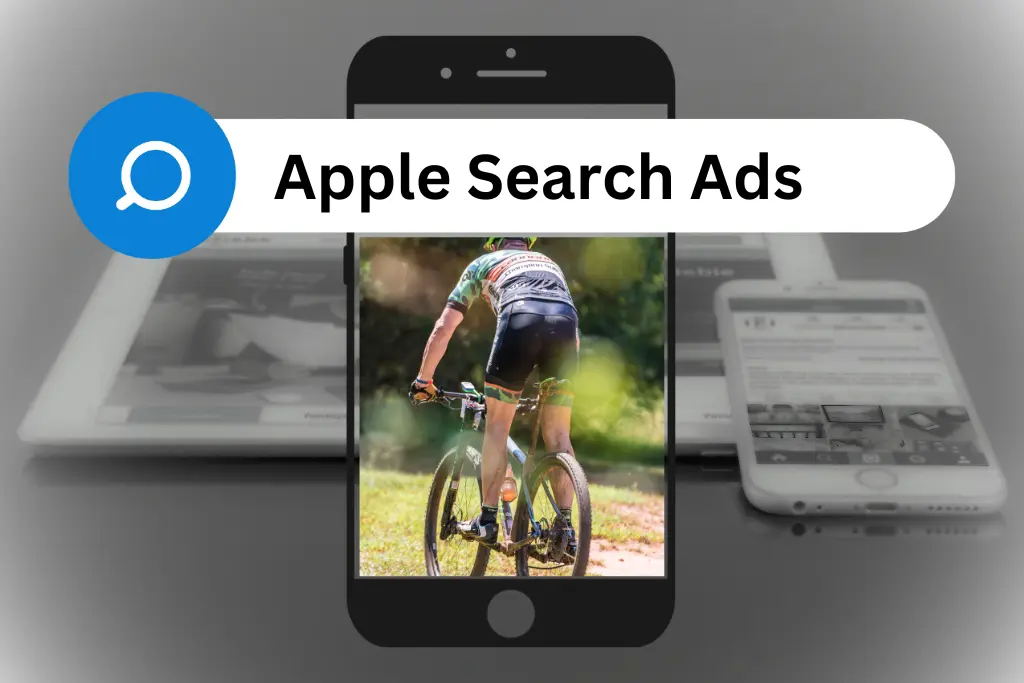A Complete Guide for Apple Search Ads

In the fiercely competitive world of mobile apps, standing out and captivating users can be an intimidating challenge. With millions of apps competing for attention across various app stores, developers and marketers are constantly seeking effective strategies to enhance their app’s visibility and attract users. Apple Search Ads, a potent tool that has garnered considerable attention in recent years, emerges as a key player in this endeavor. In this all-inclusive blog post, we will delve into the intricacies of Apple Search Ads, comprehend their functionality, and elucidate their merits. Furthermore, we will furnish practical tips to optimize your campaigns, ensuring you attain the pinnacle of success.
What is Apple Search Ads?
Apple Search Ads serves as an advertising platform offered by Apple, enabling app developers and marketers to endorse their apps directly within the search results of the App Store. These advertisements hold a prominent position at the top of relevant search result pages, appearing when users search for specific keywords or phrases. By utilizing Apple Search Ads, developers gain the ability to target users actively seeking apps akin to their own, presenting a valuable opportunity to enhance app visibility and captivate potential users.
How does Apple Search Ads work?
Apple Search Ads functions based on a pay-per-tap model, meaning advertisers are solely billed when a user interacts with their ad by tapping on it. Now, let’s delve into a detailed breakdown of its operational process:
Keyword Selection:
Advertisers determine pertinent keywords and phrases that are highly probable to be employed by users seeking apps similar to their own.
Campaign Creation:
Advertisers create their ad campaigns within the Apple Search Ads platform, including setting budgets, defining target demographics, and selecting keywords.
Ad Auction:
When a user performs a search using a specific keyword, Apple’s ad auction algorithm evaluates various factors like relevance, bid amount, and ad quality to determine which ads should be showcased. The ads that emerge victorious in the auction are then prominently displayed at the top of the search results.
Ad Display:
When an advertisement is displayed, it is prominently labeled as an “Ad” to differentiate it from the organic search results. Users are provided with the choice to tap on the ad, which can lead them to either explore the app’s details page or directly initiate the app’s download.
Benefits of Apple Search Ads:
Increased App Visibility:
Apple Search Ads provide a prominent placement at the top of search results, significantly increasing the chances of users discovering and engaging with your app.
Targeted Reach:
With the ability to select specific keywords and demographics, you can precisely target your ads to reach the most relevant audience for your app, enhancing user acquisition and engagement.
App Store Optimization (ASO) Synergy:
By using Apple Search Ads alongside effective App Store Optimization techniques, you can create a powerful combination that maximizes app visibility and user acquisition.
Measurable Results:
The Apple Search Ads platform provides comprehensive analytics and reporting tools, allowing you to track the performance of your campaigns and make data-driven decisions for optimization.
Tips for Optimizing Apple Search Ads Campaigns:
Keyword Research:
Invest time in thorough keyword research to identify the most relevant and high-performing keywords for your app. Utilize Apple’s keyword suggestion tools and external keyword research tools for a comprehensive list.
Creative Assets:
Optimize your app’s creative assets, including the app icon, screenshots, and description, to create compelling and engaging ads that entice users to tap.
A/B Testing:
Conduct A/B testing with different ad variations to understand what resonates best with your target audience. Test different creatives, call-to-actions, and ad copy to optimize your conversion rates.
Bid Management:
Continuously monitor and adjust your bids to ensure your ads remain competitive. Test different bid amounts to find the right balance between visibility and cost-effectiveness.
Tracking and Analytics:
Implement robust tracking mechanisms to measure the effectiveness of your campaigns. Analyze key metrics such as impressions, taps, downloads, and conversion rates to identify areas for improvement.
Refine and Iterate:
Regularly review your campaign performance and make data-driven optimizations. Refine your keyword selection, targeting options, and creative assets based on insights from analytics.
Final Thoughts:
Apple Search Ads offer a powerful and effective way to increase app visibility, attract new users, and drive user acquisition. By understanding the fundamentals of Apple Search Ads and implementing best practices for campaign optimization, app developers and marketers can significantly boost their app’s discoverability and maximize their chances of success in the competitive app market. Embrace the opportunities provided by Apple Search Ads and unlock the potential for increased app downloads and engagement.
Do you Want
More App Downloads?
Boost the Mobile App Growth with the Ultimate Mobile App Marketing Experts
Latest Blogs
Do you Want
More App Downloads?
Boost the Mobile App Growth with the Ultimate Mobile App Marketing Experts
Apple Search Ads offer a targeted approach, ensuring your ads appear in App Store search results when users actively search for apps. This targeted visibility increases the likelihood of attracting users genuinely interested in your app, leading to higher conversion rates.
Conduct thorough keyword research using tools like the Apple Search Ads Keyword Planner. Identify relevant terms that potential users might use when searching for apps similar to yours. Also, consider A/B testing different keyword combinations to refine your strategy over time.
Yes, you can set both daily and lifetime budgets for your campaign. This allows you to control your spending and ensures that your ads are visible within the specified budget constraints.
Key performance metrics include the tap-through rate (TTR), conversion rate, and cost per acquisition (CPA). Regularly monitoring these metrics on the Apple Search Ads dashboard provides insights into the effectiveness of your campaign and allows you to make data-driven optimizations.
To optimize for different regions, consider incorporating localized keywords, creatives, and messaging. Tailoring your campaign to specific geographical locations ensures cultural relevance and resonance with diverse audiences.
Yes, A/B testing is crucial for optimizing your Apple Search Ads campaign. Testing different ad creatives, keywords, and targeting options allows you to identify what resonates best with your target audience, ultimately improving the overall performance of your ads.
Seasonal campaigns capitalize on trends and events, adjusting ad creatives and targeting strategies to align with specific seasons or holidays. This can enhance the relevance of your ads and attract users during peak times.
Stay informed by regularly checking official Apple Search Ads documentation and announcements. Joining relevant forums and communities can also provide insights into platform updates, new features, and best practices.
Yes, you can implement retargeting strategies to re-engage users who have previously interacted with your app but did not complete the desired action. This helps in bringing back potentially interested users and improving overall conversion rates.
Continuous adaptation is essential. Stay agile and adjust your strategies based on changes in the App Store landscape, user behavior, and the performance metrics of your ads. Regularly revisit and optimize your campaigns to stay competitive and effective.




